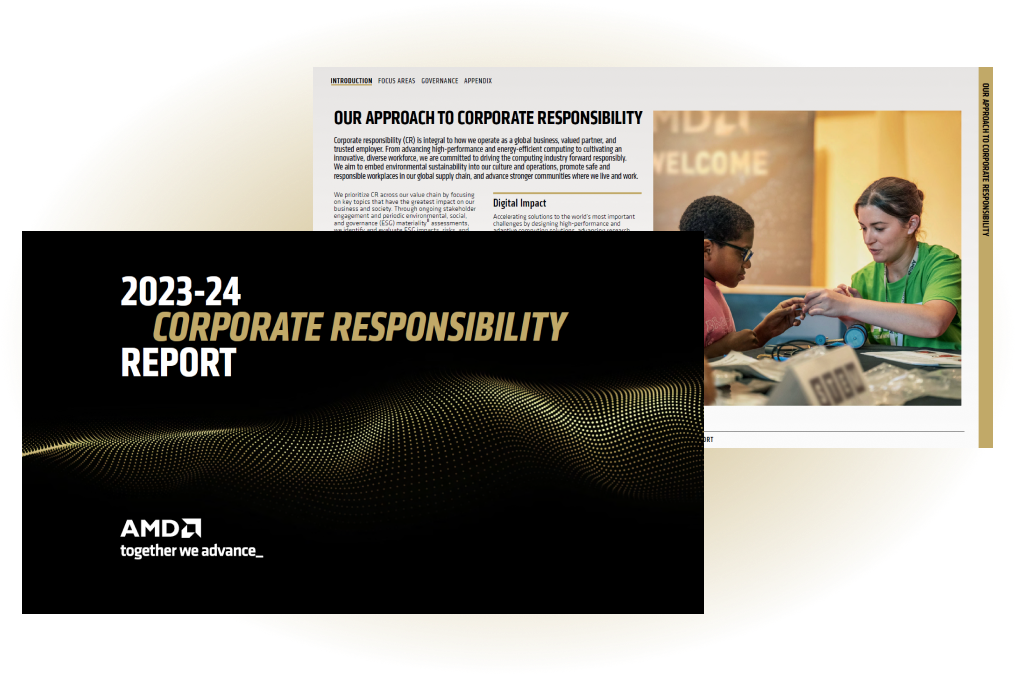
ESG Materiality Assessment
A materiality1 assessment helps us prioritize ESG issues within our approach and goal setting, and it guides our engagement with key stakeholders. It also helps us focus our reporting and transparency efforts on the issues that have the largest impact on our business, as well as the environment and society.
In 2023, we engaged with BSR to complete an ESG materiality assessment, which considers how a company's actions affect the economy, environment, and people. This assessment took into account the continued evolution of our business, investor and stakeholder ESG information needs, and reporting expectations informed by organizations such as the Global Reporting Initiative (GRI) and the Sustainability Accounting Standards Board (SASB, now part of the IFRS Foundation).
The methodology included assessing sustainability and human rights trends in our industry, identifying key issues, gathering internal and external perspectives through interviews and research, analyzing data, and validating findings through workshops with senior leadership.
BSR evaluated 13 ESG issues for their relative importance. The resulting ESG materiality matrix reflects this importance based on two perspectives: the potential impact of ESG issues on the business (“financial materiality”) and the potential impact the business has on society and the environment (“impact materiality”). In this way, the assessment adopts a “double materiality” approach.
Assessment Results
The overall changes in our matrix reflect the evolving expectations of AMD – ours and those of our stakeholders – and the shift in methodology from perception-based to impact-based materiality. The assessment is also informed by specific emerging risks and opportunities related to new products and markets for AMD.
Although this 2023 assessment resulted in some changes to the placement of topics within our matrix compared to previous years, the issues remain largely consistent. The biggest shift is the emergence of responsible AI and product use as a top-tier issue. Human rights in the supply chain and responsible sourcing moved up in importance as well, reflecting external stakeholders’ increasing focus on issues related to workers’ rights. Additionally, two issues – workforce recruitment, retention, and development; and diversity, belonging, and inclusion (DB&I) – shifted to the right, reflecting the increasing importance of these topics to our business.
Investors, policymakers, and corporations are also treating the climate crisis with more urgency. The energy efficiency of our products remains a priority for AMD, especially for high-performance computing and AI training, due to energy demanding workloads. Our products that power climate solutions, like wind turbines and climate research, also increased in importance on the matrix.
AMD CR Focus Areas
The results of the materiality assessment reaffirm our company’s CR strategic focus areas (shown below) while providing valuable insight into new issues that need to inform our business strategy and operations moving forward.
We also consider several of the issues noted in the matrix as part of our foundational approach to conducting business responsibly. These issues include responsible sourcing, corporate governance, ethical conduct, product security, data privacy, business continuity planning, and supply chain resilience.
Assessment Methodology
- Assess the landscape: Identify sustainability and human rights trends for the technology industry relevant to AMD.
- Identify the issues: Work to strategically combine issues to make them more manageable.
- Understand internal and external stakeholder perspectives:
- Internal interviews: interviewed 15 senior AMD staff to understand their view of priority ESG issues.
- External interviews: interviewed five external stakeholders, including a customer, supplier and NGO, to understand our company’s impacts.
- Desktop research: benchmark of peers in the tech industry and assessment of larger ESG and tech industry trends and issues via BSR team expertise.
- Analyze:
- Revise prioritization criteria and issue list based on stakeholder engagement and landscape assessment.
- Conduct assessment to prioritize sustainability issues and materiality matrix.
- Develop high-level recommendations for future issue strategy development and commitments to ESG governance and disclosure.
- Validate and plan: Conduct an internal stakeholder materiality workshop with AMD senior leadership to obtain support for issue prioritization, CR strategy framework, and recommendations.
Human Rights Saliency Assessment
In 2023, alongside our ESG materiality refresh with BSR, we also conducted our first Human Rights Saliency Assessment. We prioritized the timing of this exercise to follow our major acquisitions in 2022 and reflect the expansion of our global presence and products.
BSR conducted the assessment in alignment with the United Nations Guiding Principles on Business and Human Rights to identify the most salient human rights issues for AMD, based on the risk of severity of impact to rightsholders and the likelihood of their occurrence. The process included input from AMD executives, customers, suppliers, and international NGOs serving as legitimate representatives for workers in our supply chain.
We are using the information to prioritize our focus areas, review policies, and evaluate collaborations with value chain partners.
Stakeholder Engagement
We strive to create shared value through ongoing communication with our stakeholders and to understand their interests and concerns, respond transparently to evolving issues, and incorporate their input into our planning and programs.

Advancing Corporate Responsibility
We embed corporate responsibility across our operations and communities so that together we advance_

Footnotes
We include certain disclosures, reports and information on various environmental, social and corporate responsibility-related matters on our website (collectively, our ‘ESG Materials’). Our ESG Materials may contain information that is significant; however, any significance should not be read as necessarily rising to the level of the definition of materiality used for the purposes of our compliance with the U.S. federal securities laws, even where we use the word ‘material’ or ‘materiality’ in our ESG Materials (including where we use it in connection with our materiality assessment) or in other materials issued in connection with the matters discussed in our ESG Materials. We have used definitions of materiality in the course of creating our ESG Materials and the goals and metrics discussed therein that do not coincide with or rise to the level of the definition of materiality used for the purposes of our compliance with the U.S. federal securities laws. Moreover, given the uncertainties, estimates and assumptions inherent in the matters discussed in our ESG Materials, and the timelines involved, materiality is inherently difficult to assess far in advance. In addition, given the inherent uncertainty of the estimates, assumptions and timelines associated with the matters discussed in our ESG Materials, we may not be able to anticipate in advance whether or the degree to which we will or will not be able to meet our plans, targets or goals.
We include certain disclosures, reports and information on various environmental, social and corporate responsibility-related matters on our website (collectively, our ‘ESG Materials’). Our ESG Materials may contain information that is significant; however, any significance should not be read as necessarily rising to the level of the definition of materiality used for the purposes of our compliance with the U.S. federal securities laws, even where we use the word ‘material’ or ‘materiality’ in our ESG Materials (including where we use it in connection with our materiality assessment) or in other materials issued in connection with the matters discussed in our ESG Materials. We have used definitions of materiality in the course of creating our ESG Materials and the goals and metrics discussed therein that do not coincide with or rise to the level of the definition of materiality used for the purposes of our compliance with the U.S. federal securities laws. Moreover, given the uncertainties, estimates and assumptions inherent in the matters discussed in our ESG Materials, and the timelines involved, materiality is inherently difficult to assess far in advance. In addition, given the inherent uncertainty of the estimates, assumptions and timelines associated with the matters discussed in our ESG Materials, we may not be able to anticipate in advance whether or the degree to which we will or will not be able to meet our plans, targets or goals.




